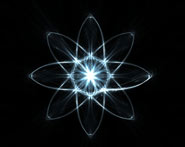


 الفيزياء الكلاسيكية
الفيزياء الكلاسيكية
 الكهربائية والمغناطيسية
الكهربائية والمغناطيسية
 علم البصريات
علم البصريات
 الفيزياء الحديثة
الفيزياء الحديثة
 النظرية النسبية
النظرية النسبية
 الفيزياء النووية
الفيزياء النووية
 فيزياء الحالة الصلبة
فيزياء الحالة الصلبة
 الليزر
الليزر
 علم الفلك
علم الفلك
 المجموعة الشمسية
المجموعة الشمسية
 الطاقة البديلة
الطاقة البديلة
 الفيزياء والعلوم الأخرى
الفيزياء والعلوم الأخرى
 مواضيع عامة في الفيزياء
مواضيع عامة في الفيزياء|
Read More
Date: 8-12-2016
Date: 5-2-2021
Date: 9-12-2020
|
HETERODYNING
No matter what the mode, and regardless of the medium, waves mix to produce other waves. When this happens with sound, the effect is called beating; when it happens with radio signals, it is called heterodyning, or mixing. Two sound waves that are close to each other in pitch will beat to form a new wave at a much lower frequency and another wave at a higher frequency.
If you have access to a music synthesizer or a laboratory signal generator (or failing those, a couple of loud horns), you can do an experiment to demonstrate this. When two notes in the treble clef are played loudly at the same time, you’ll hear a low-frequency hum. This is the lowerpitched of the two beat notes. The higher-pitched note is harder to notice. Figure 1 shows examples of wave beating in which the low-frequency notes are visually evident. In part a, the waves, shown by sets of vertical lines, differ in frequency by 10 percent (f and 1.1f); in part b, by 20 percent (f and 1.2f), and in part c, by 30 percent (f and 1.3f). Beat and heterodyne waves always occur at a frequencies equal to the sum and difference between the frequencies of the waves that produce them. If you play two notes together, one at 1,000 Hz and another at 1,100 Hz, a beat note appears at 100 Hz. When notes at 1,000 Hz and 1,200 Hz are combined, a 200-Hz beat wave is the result. If you adjust a music synthesizer to play notes at 1,000 Hz and 1,300 Hz, there is a 300-Hz beat note. If you hold one note steady and continuously vary the frequency of the other, the beat notes rise and fall in pitch. If you can secure the use of a good synthesizer, you ought to try this experiment. The beat notes will seem to come from a direction you cannot identify. It is a bizarre sensation, not to be missed by the truly devoted audiophile.
Radio-frequency heterodyning was discovered by engineers in the early 1900s. Under certain conditions, two wireless signals combine to produce a new signal at the difference frequency. It’s easy to design a circuit to produce this effect. In fact, the phenomenon, not always desired, is difficult to prevent.
Given two waves having different frequencies f and g (in hertz), where g>f, they beat or heterodyne together to produce new waves at frequencies x and y (also in hertz) as follows:
x = g - f
y = g+f
These formulas also apply for frequencies in kilohertz, megahertz, gigahertz, and terahertz—provided, of course, that you stick with the same units throughout any given calculation.

Fig. 1. Two waves can beat to form a new wave at the difference frequency. (a) The two waves differ in frequency by 10 percent. (b) By 20 percent. (c) By 30 percent.



|
|
|
|
للعاملين في الليل.. حيلة صحية تجنبكم خطر هذا النوع من العمل
|
|
|
|
|
|
|
"ناسا" تحتفي برائد الفضاء السوفياتي يوري غاغارين
|
|
|
|
|
|
|
نحو شراكة وطنية متكاملة.. الأمين العام للعتبة الحسينية يبحث مع وكيل وزارة الخارجية آفاق التعاون المؤسسي
|
|
|